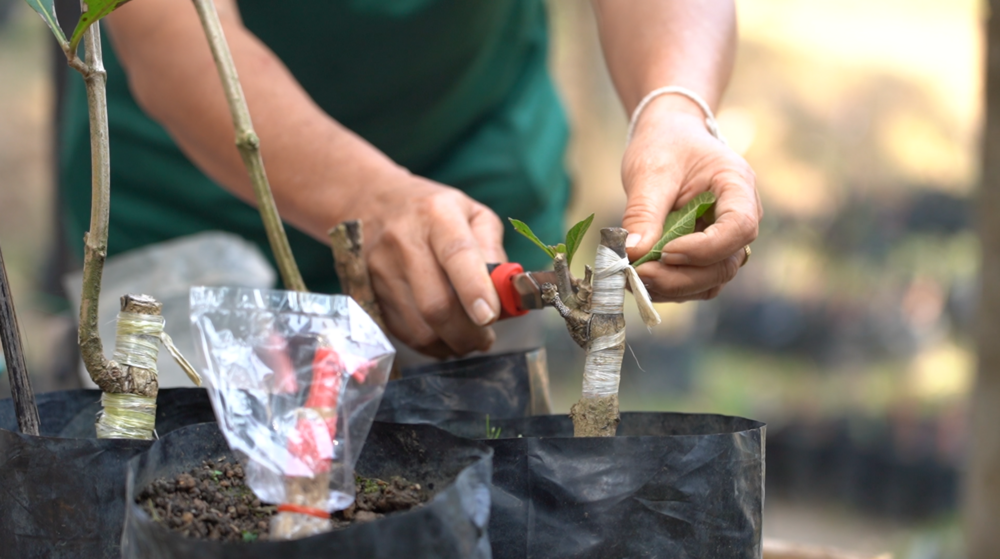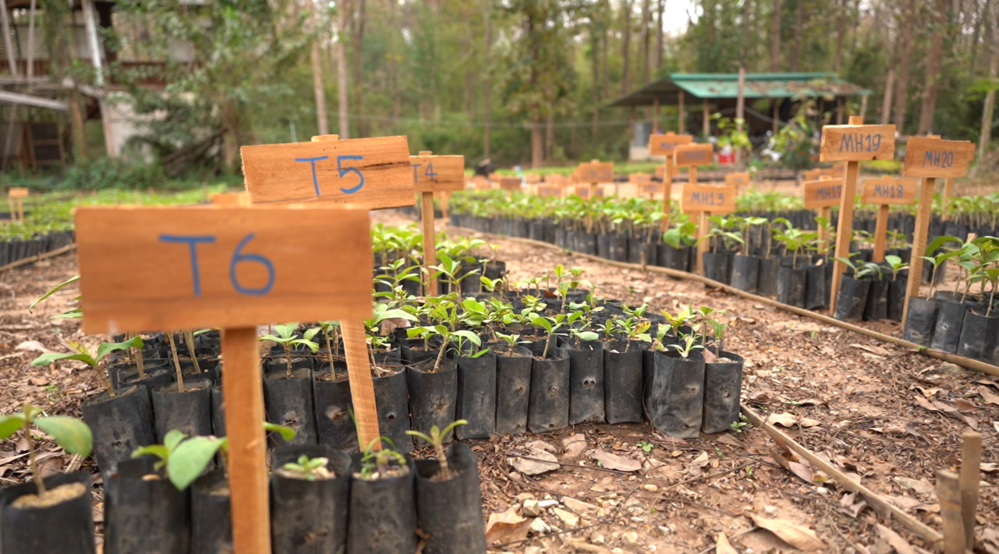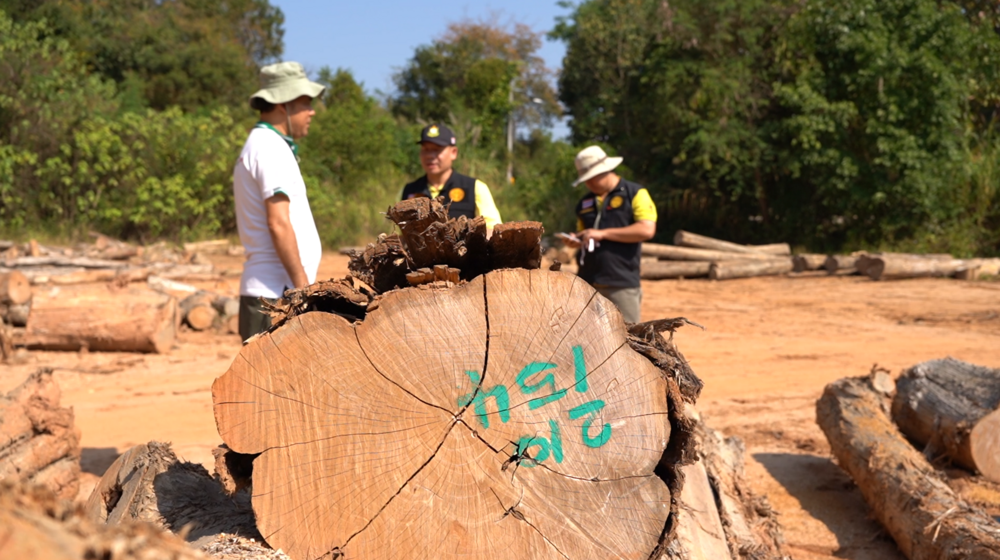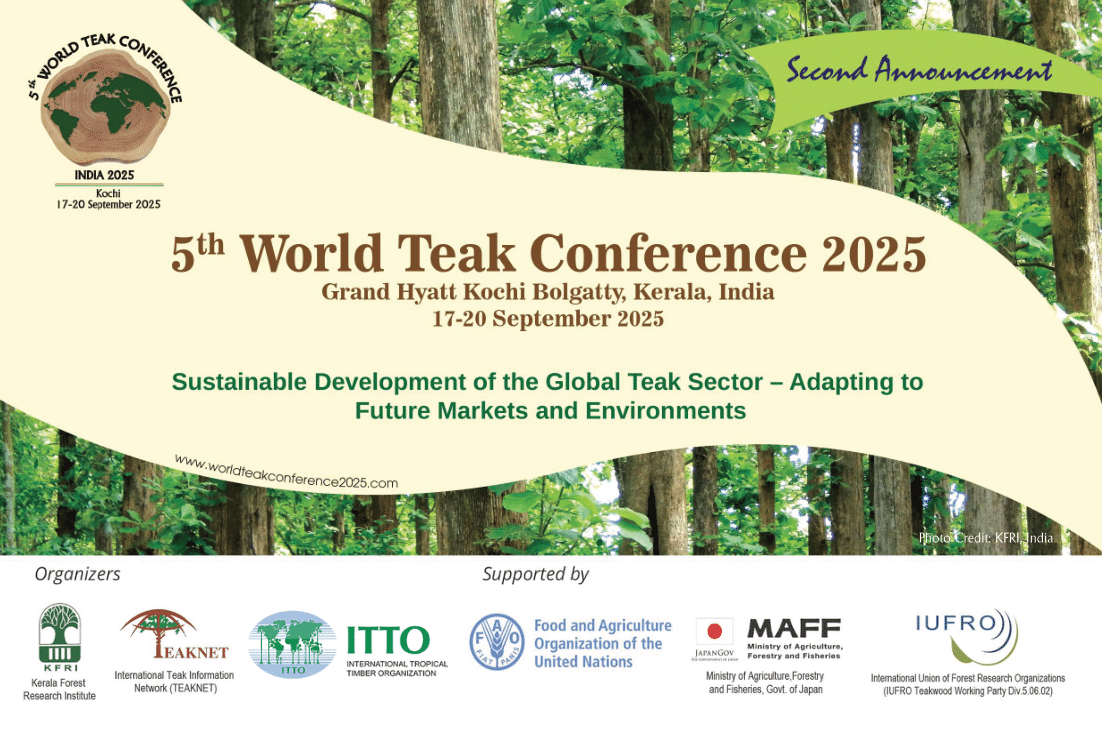ITTO webinar spotlights power of cloning for sustainable teak production
11 July 2025, Yokohama
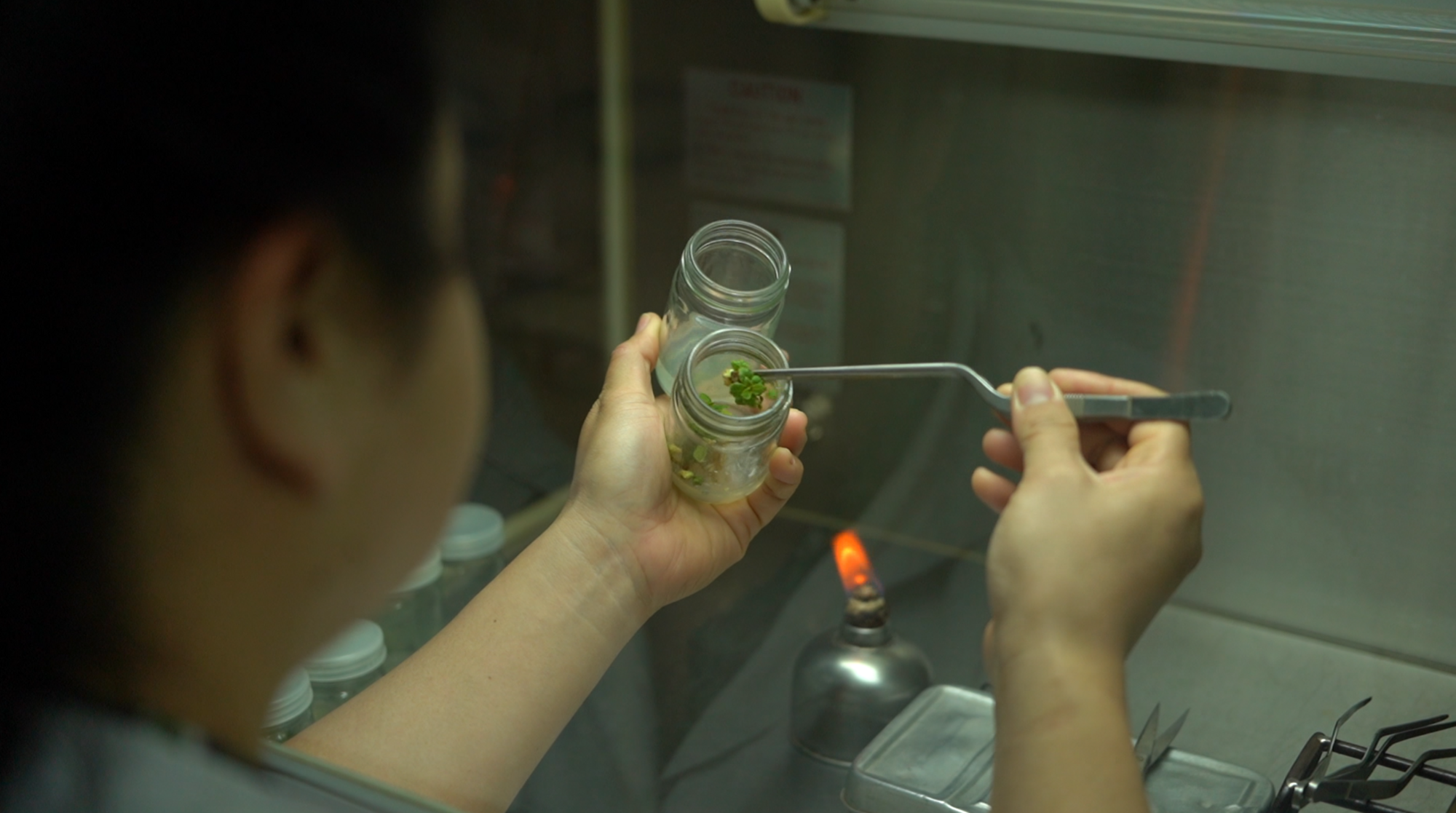
Demonstration of tissue culture technique at the Teak improvement center laboratory in Northern Thailand. Photo: Alfredo Ruzol
Teak produced through tissue culture is already delivering higher yields and bigger returns on commercial plantations around the world, but this source of improved planting stock is still largely out of reach for smallholders.
This was among the conclusions of a webinar held on 27 June 2025 as part of a flagship ITTO project to promote smallholder teak production and bolster the sustainable cultivation and trade of one of the world’s most valuable tropical timber species.
Titled “Teak Seedlings Innovation via Tissue Culture”, the webinar drew participants from countries across the Asia-Pacific region and West Africa with presentations on the development and potential of cloned planting materials for both commercial and smaller-scale users.
The webinar first heard from Doreen Goh, Managing Director of YSG Bioscape Sdn Bhd Sabah, a Malaysian company that has exported cloned teak seedlings to some 25 countries around the world.
Dr Goh first explained the constraints of the traditional propagation of teak from seed, including limited availability of quality seed, unpredictable germination rates, and high variability in key properties such as growth rate, quality and resistance to stress.
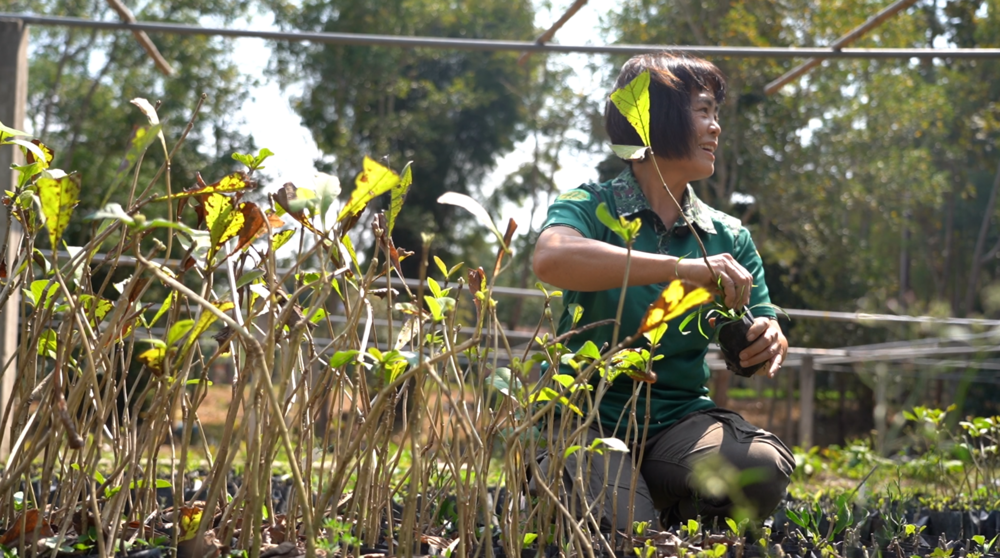
In contrast, vegetative propagation, or cloning, in a laboratory can produce an unlimited number of identical plants using material from a single mother tree that has been selected for its particular and outstanding characteristics.
Dr Goh said her company, a subsidiary of the Sabah Foundation, first worked with French agricultural research organization, CIRAD, to develop teak planting materials derived from eight specimen trees found in the Solomon Islands.
During more than 20 years of research and development, the company has further refined its selection process using DNA and wood analysis and now offers clones of more than 50 genotypes grown in two provenance plots. Seedling survival rates in its nurseries have surpassed 90 percent.
Today, YSG Bioscape planting stock is being used in various projects around the world, Dr Goh said. They include intercropping systems with rubber (in Ivory Coast), arrowroot (Indonesia) and coffee and banana (French Guiana) as well as border plantings with oil palm (Malaysia) and agro-pastoral systems (Ecuador and Philippines).
The cloned planting materials have also been used to establish teak plantations in Brazil and Cambodia. Data showed that the clonal-derived trees were producing higher yields than their seed-derived equivalents, Dr Goh said.
The faster growth rates of cloned teak meant plantations in Brazil were considering a rotation period of 15–18 years rather than 20–25 years – a significantly faster return on their investment. In Cambodia, meanwhile, growers are looking at just 6–7 years and using innovative wood preservation and other technologies to improve the quality of the resulting timber.
Responding to a point raised during the webinar by ITTO’s Director of Trade and Industry, Dr Goh agreed that plantation teak may represent “a sacrifice in quality” compared to slower-growing teak from natural forests.
But with the supply of teak from natural forests in steady decline, “we have no other option but to try to fall back on fast-growing clonal plantation of teak,” she said. “At the end of the day, we have to talk about the supply and demand, the market, whether the consumer is going to be able to accept lesser quality timber.”
Tissue culture techniques
The second expert speaker was Paiboolya Gavinlertvatana, Managing Director of Thai Orchid Labs Co. Ltd. (TOL), a private supplier of teak and rubberwood seedlings based in Thailand. The company’s 3,000 square metre facility can produce 20 million plants a year, including fruit and vegetable species, ornamentals and herbs as well as trees.
Dr Gavinlertvatana delved deeper into the technology of tissue culture, pointing out that it can employed for the conservation of rare species as well as the improvement and mass-production of planting materials.
Several different tissue culture techniques can be deployed depending on the goal, including shoot-tip culture, embryo culture, embryogenesis and organogenesis. For commercial viability, any technique must also be scalable, reliable, consistent and profitable – and deliver goods results in the field.
To develop improved teak, TOL worked with Thailand’s Royal Forestry Department to select mother trees, some of them specimens of more than 40 metres in height, with only about 1 in 1000 trees examined making it into the gene bank.
TOL’s cloned materials have since been planted in Thailand and other parts of Southeast Asia as well as in Australia, Guatemala, Jamaica and Mozambique. TOL’s own 1000 ha teak plantation in Thailand is now about 19 years old.
“The performance looks very good in terms of form, uniformity and growth,” Dr Gavinlertvatana said.
To look for further improvements, he said the company continues to select trees for traits including defoliator resistance, is working with the National Biotechnology Institute to identify gene markers for desirable traits, and is also experimenting with hybrids.
Covering costs
Both speakers pointed out that their companies were diversifying into a wide range of other tree and plant species beyond teak.
To cover the high costs of operating a tissue lab, Dr Goh said her company is looking into supplying clones of trees such as Acacia magnium and Eucalyptus pellita, cash crops like banana and vanilla, and ornamentals including orchids.
TOL, meanwhile, is working with university researchers to develop non-timber products including dyes and a shampoo made from teak leaves designed to reduce hair loss.
Spreading benefits
“Good quality teak tissue culture seedlings can give us high wood yield, high quality wood, and therefore high price and value and a very high return,” Dr Gavinlertvatana.
Yet both speakers conceded that, while commercial plantation operators and the sustainable teak industry as a whole could profit from lab-replicated teak, affordable solutions must still be found for smallholders.
Dr Goh said her company could supply high-quality mother stock to local nurseries who could use more traditional methods to cultivate affordable improved teak planting materials for small farmers, who could then take cuttings of their own.
Another solution could be for smallholders to form cooperatives who could then order cloned plants in sufficient numbers for it to be worthwhile for the producer, Dr Gavinlertvatana said.
The speakers also addressed concern that teak rotations remain too long for smallholders who need faster returns from their limited land.
While major consumer markets like the European Union will continue to demand high quality teak timber grown for several decades, local or regional markets could emerge for timber of maybe 10–14 years, for instance, for furniture or other small-scale woodworking industries.
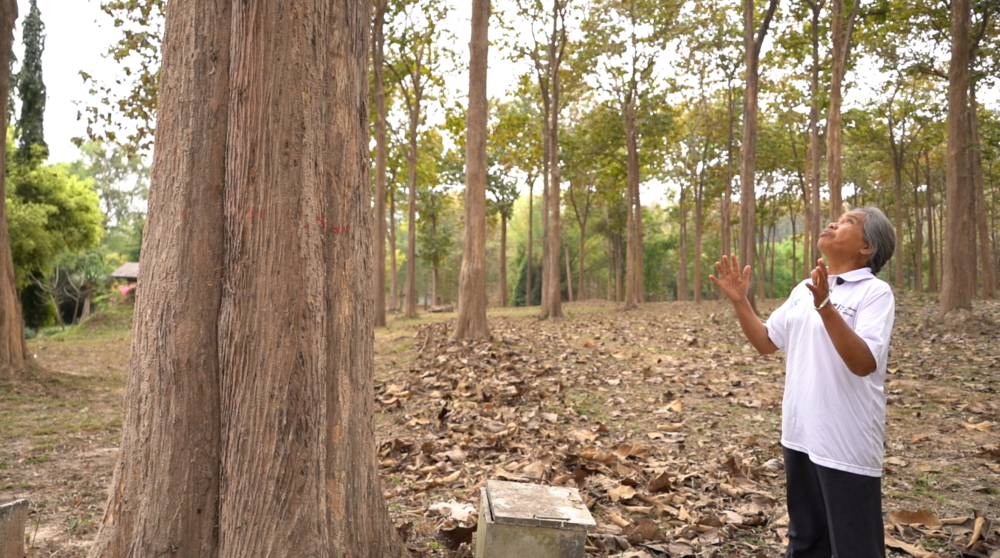
Smallholders also have the option of integrating teak into agroforestry systems with cash crops and may, like their commercial counterparts, qualify for payments from the generation of carbon credits, Dr Gavinlertvatana said.
The webinar series is part of the second phase of the ITTO project “Promoting Quality Timber Production in Smallholder and Community-based Teak and Other Valuable Species Plantations in the Tropics.” The project, which is supported by the German government, has been under implementation since 2023 in Cambodia, India, Indonesia, Thailand, Togo and Viet Nam.
“Clonal propagation through tissue culture presents a promising opportunity to accelerate sustainable teak production—especially as we face mounting pressure on natural forest resources,” said ITTO Executive Director Sheam Satkuru. “But the true potential of this innovation lies in ensuring that smallholders can access and benefit from it. ITTO is committed to bridging this gap through knowledge sharing, partnerships, and targeted support.”
Organized in collaboration with the TEAKNET information network, the webinars provide a collaborative learning platform for smallholders, forestry authorities and academic partners to advance knowledge and innovation across the supply chains for teak and other high-value timber species.
Other topics to be discussed include pest and disease control, fire management, certification, legality, and the role of carbon finance and other incentives.
Related links:
Promoting Quality Timber Production in Smallholders and Community-based Teak Plantations in Cambodia
High-quality seeds yield high-value timber: ITTO-BMEL hosts second teak webinar
The prospects for plantation teak
